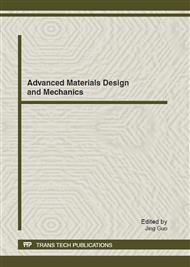p.585
p.589
p.593
p.598
p.603
p.610
p.615
p.620
p.627
Lightweight Design for a Cab of a Heavy-Duty Truck Based on Passive Safety
Abstract:
This paper focuses on the cab of a heavy-duty truck. Lightweight design and structural improvements for the cab-in-white were carried out by using the topology optimization shape optimization and size optimization methods, and the weight was reduced by 46kg without changing the cab structural materials. Performed modal analysis of the lightweight cab, and then compared analysis results with those corresponding results of the original cab. Comparative analysis showed that the first ten natural vibration frequencies of the lightweight cab all have a certain increase compared with those of the original structure. On this basis the simulation analysis of the passive safety of the lightweight cab was performed. Besides a sample of the lightweight cab was developed, and tests on the passive safety of the lightweight cab were completed. Tests results validated that the passive safety of the lightweight cab met the requirements of ECE R29. Also the effectiveness of the cab structural lightweight design improvements and the simulation analysis of the passive safety was verified by tests.
Info:
Periodical:
Pages:
603-609
Citation:
Online since:
September 2012
Authors:
Price:
Сopyright:
© 2012 Trans Tech Publications Ltd. All Rights Reserved
Share:
Citation:


